AREA AND PERIMETER OF A TRIANGLE WORKSHEET
1. Find the area and perimeter of the triangle shown below.
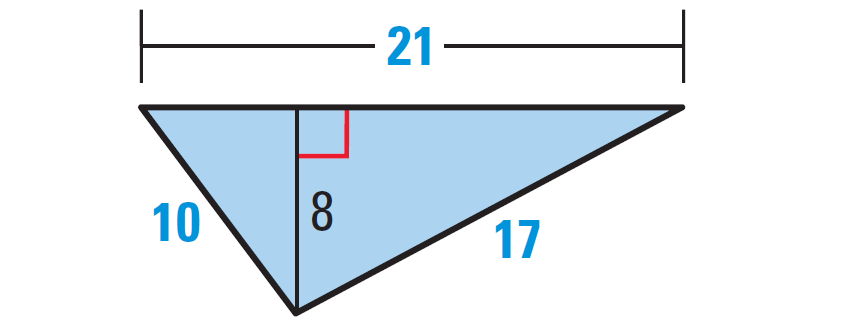
2. Find the area and perimeter of the triangle given below.
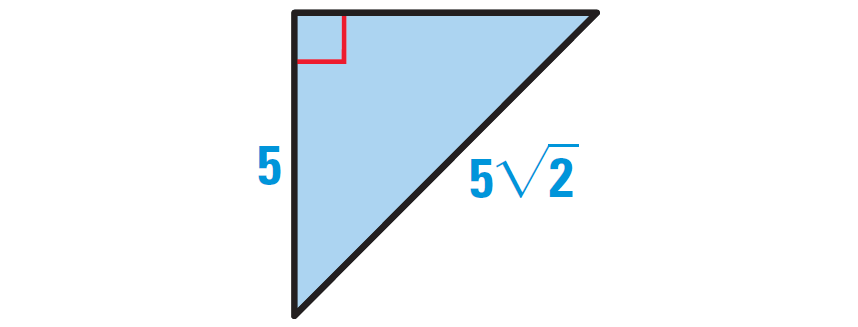
3. Area of the triangle shown below is 126 square units. Find the perimeter and height of the triangle.
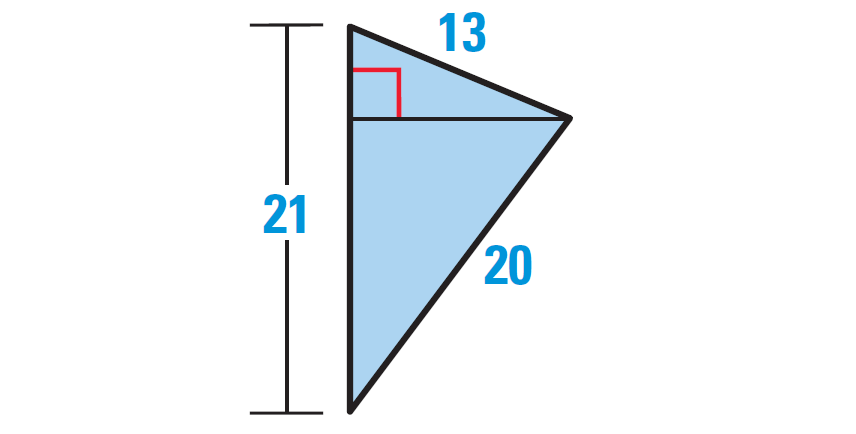
4. Find the area and perimeter of the triangle defined by the following points :
D(1, 3), E(8, 3) and F(4, 7)

1. Answer :

Because we want to find the area of the triangle, we have to know its base and height.
To know the base and height of the triangle, let us rotate the given triangle as shown below.
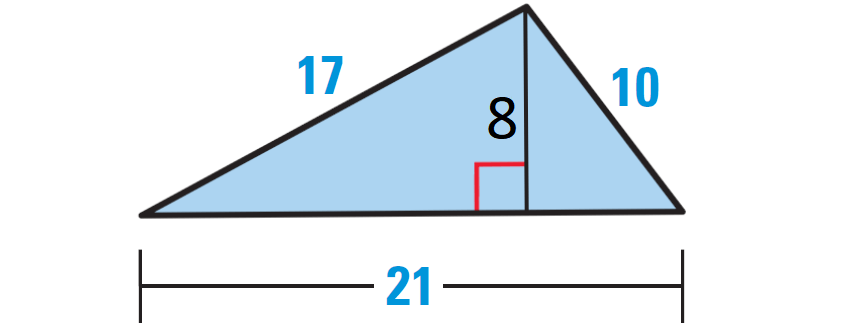
Base = 21 units and height = 8 units.
Area of the triangle :
= (1/2)⋅base ⋅ height
= (1/2) ⋅ 21 ⋅ 8
= 84 square units
Perimeter of the triangle :
= Sum of the lengths of all the three sides
= 17 + 10 + 21
= 48 units
2. Answer :

Because we want to find the area of the triangle, we have to know its base and height.
To know the base and height of the triangle, let us rotate the given triangle as shown below.
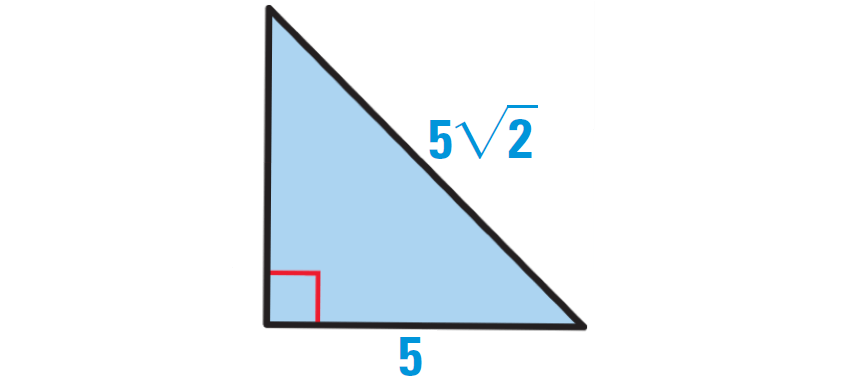
Use Pythagorean theorem to find the height of the triangle.
h2 + 52 = (5√2)2
h2 + 25 = 52 ⋅ (√2)2
h2 + 25 = 25 ⋅ 2
h2 + 25 = 50
Subtract 25 from each side.
h2 = 25
h2 = 52
h = 5
Area of the triangle :
= (1/2) ⋅ base ⋅ height
= (1/2) ⋅ 5 ⋅ 5
= 12.5 square units
Perimeter of the triangle :
= Sum of the lengths of all the three sides
= 5 + 5 + 5√2
= (10 + 5√2) units
3. Answer :

For our convenience, let us rotate the given triangle as shown below.
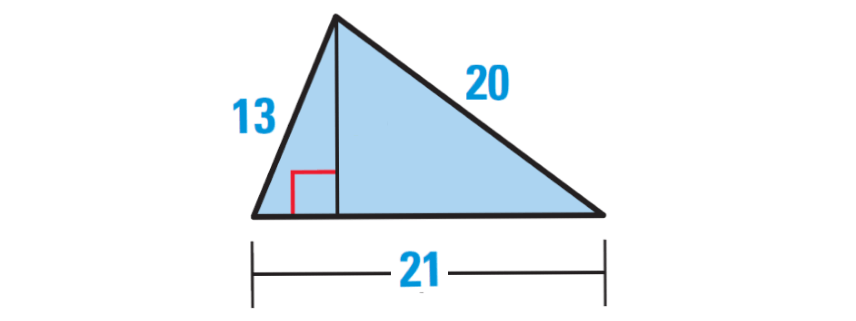
In the triangle above, base = 21 units.
Given :
Area of the triangle = 126 square units
(1/2) ⋅ base ⋅ height = 126
Substitute base = 21.
(1/2) ⋅ 21 ⋅ height = 126
Multiply each side by 2.
21 ⋅ height = 126⋅2
21 ⋅ height = 252
Divide each side by 21.
(21 ⋅ height)/21 = 252/21
height = 12
Perimeter of the triangle :
= Sum of the lengths of all the three sides
= 13 + 20 + 21
= 54 units
4. Answer :
Plot the points in the coordinate plane. Draw the height from F to the side DE. Label the point where the height meets DE as G. Point G has coordinates (4, 3).
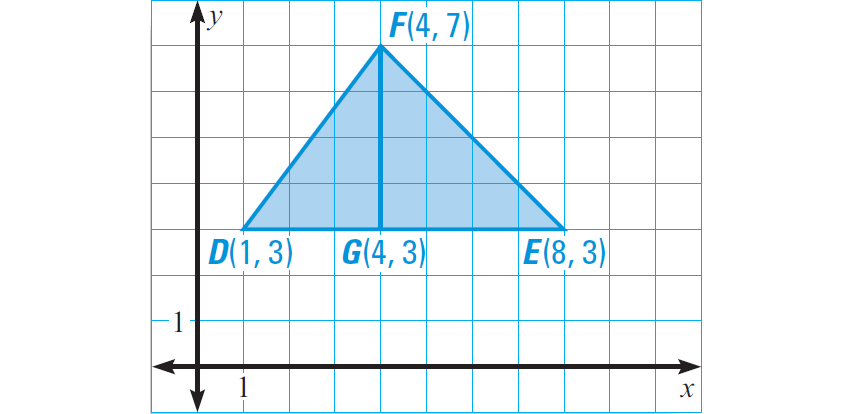
Length of DE :
= 8 - 1
= 7
Use distance formula to find the length of EF and FD.
Distance Formula :
= √[(x2 - x1)2 + (y2 - y1)2]
Length of EF :
(x1, y1) = E(8, 3)
(x2, y2) = F(4, 7)
EF = √[(4 - 8)2 + (7 - 3)2]
EF = √[(-4)2 + (4)2]
EF = √[16 + 16]
EF = √32
EF = √(4 ⋅ 4 ⋅ 2)
EF = 4√2
Length of FD :
(x1, y1) = F(4, 7)
(x2, y2) = D(1, 3)
FD = √[(1 - 4)2 + (3 - 7)2]
FD = √[(-3)2 + (-4)2]
FD = √[9 + 16]
FD = √25
FD = 5
Perimeter of the triangle :
= 5 + 7 + 4√2
= (12 + 4√2) units
Kindly mail your feedback to v4formath@gmail.com
We always appreciate your feedback.
©All rights reserved. onlinemath4all.com
Recent Articles
-
Writing Quadratic Functions in Standard Form Worksheet
Apr 27, 24 12:26 AM
Writing Quadratic Functions in Standard Form Worksheet -
Writing Quadratic Functions in Standard Form
Apr 27, 24 12:13 AM
Writing Quadratic Functions in Standard Form or Vertex Form -
How to Find the Vertex of a Quadratic Function in General Form
Apr 27, 24 12:06 AM
How to Find the Vertex of a Quadratic Function in General Form